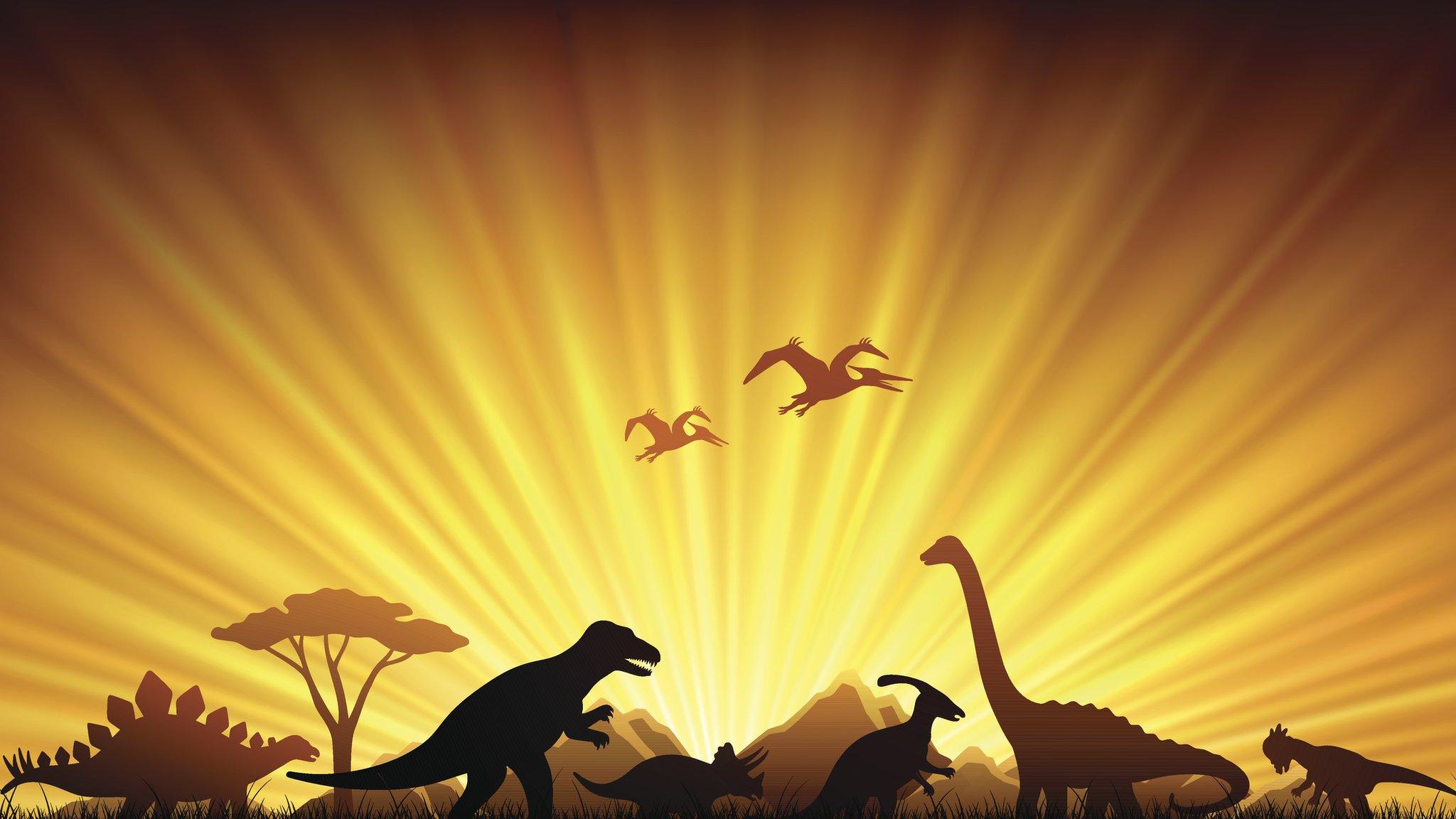Snappy evolution saw crocodiles outlive the dinosaurs
- Published
- comments

Crocodiles are often described as 'living fossils', but despite their ancient relatives sharing the Earth with dinosaurs, researchers say that isn't the case because they looked very different.
It's all to do with evolution and being able to adapt to different environments quickly and it's just one of the reasons crocodiles survived the extinction event that wiped out the dinosaurs.
Today crocodiles live in lakes and swamps, but researchers say that prehistoric species evolved quickly and could live happily on land or in the sea.
Modern crocodiles have fossil records stretching back 55 million years, but the records of their extinct relatives go back even further, to around 230 million years and they all came in different shapes and sizes.
So what did ancient crocodiles look like?
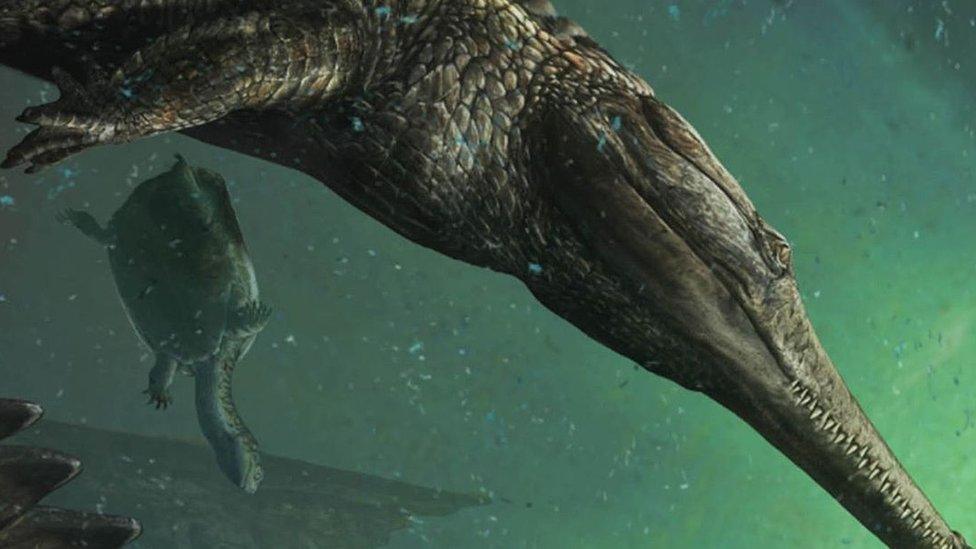
Prehistoric crocs lived on land and in the sea
Scientists from the University of Bristol and Harvard University studied over 200 skulls and jaws of crocodiles and their extinct species.
Dr Tom Stubbs, who led the study, said: "There are only 26 crocodile species around today, most of which look very similar. However, there are hundreds of fossil species with spectacular variation, particularly in their feeding apparatus."
Dr Stephanie Pierce, Associate Professor of Organismic and Evolution Biology at Harvard University, said: 'Ancient crocodiles came in a dizzyingly array of forms. They were adapted to running on land, swimming in the water, snapping fish, and even chewing plants.
'Our study shows that these very different ways of living evolved incredibly fast, allowing extinct crocodiles to rapidly thrive over many millions of years."
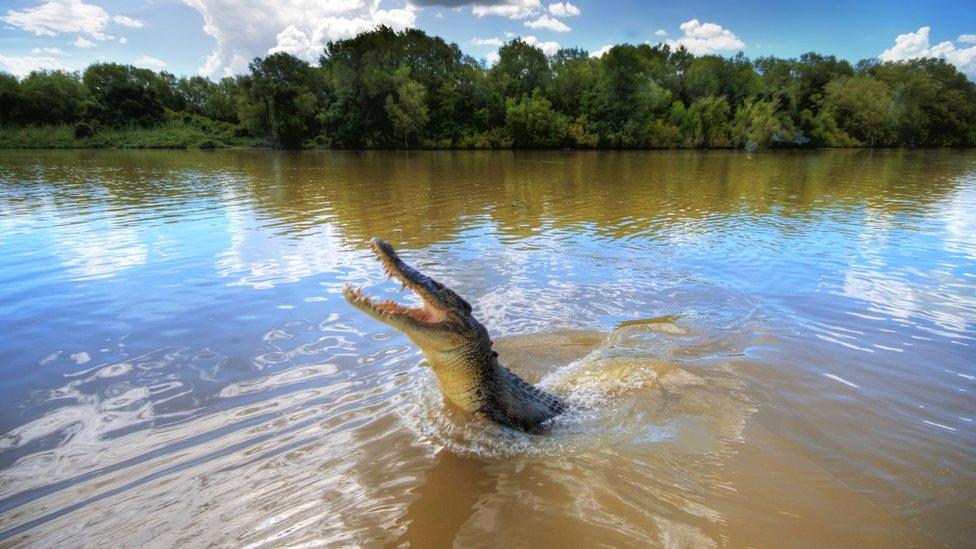
Today's crocodiles are not as diverse as the various species that lived on land and in the sea during the time of the dinosaurs
The team believes that today's crocodiles, alligators and gharials (known as the fish-eating crocodile that has a long snout) evolved steadily over the last 80 million years.
Whereas extinct crocodile groups, evolved very fast over millions of year.
These species also underwent huge changes to their skulls and jaws, becoming almost mammal-like at times.
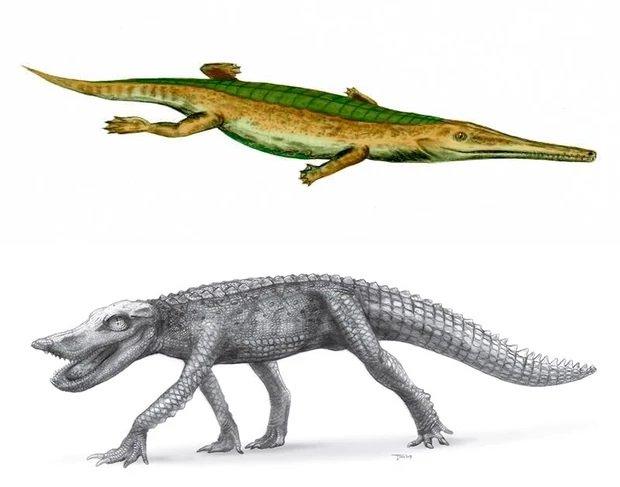
A dolphin-like thalattosuchian (above) and a long-legged notosuchian (below)
Fossil records show crocs living in the ocean called thalattosuchians had dolphin-like features, while the crocodiles that lived on land called notosuchians were fast moving plant eaters.
Scientists believe that dramatic changes to climate and the environment can cause rapid evolution, but this is the first time it has been shown in crocodiles.
Professor Michael Benton, who also worked on the study, said: 'It's not clear why modern crocodiles are so limited" in their design.
"Perhaps they only did well when world climates were warmer than today," he added
- Published11 June 2020
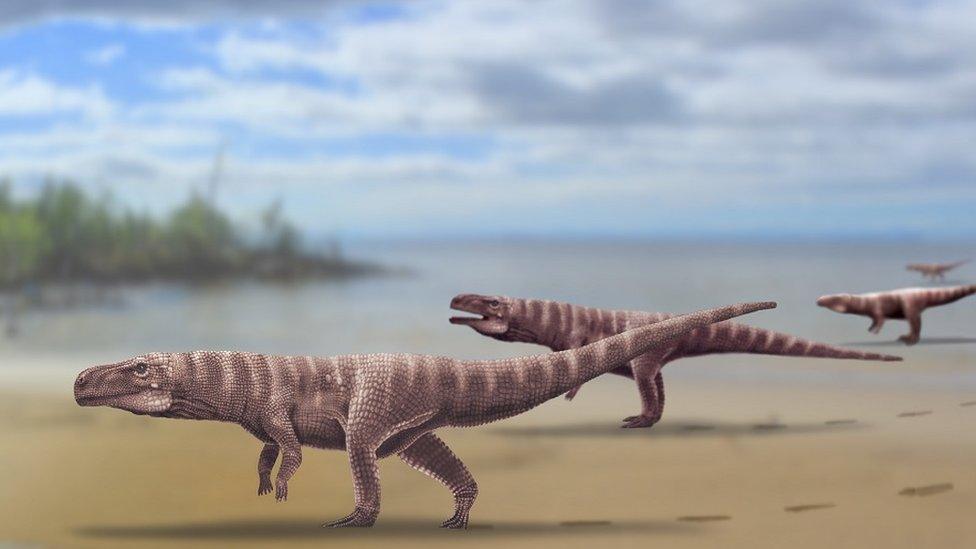
- Published30 June 2020
